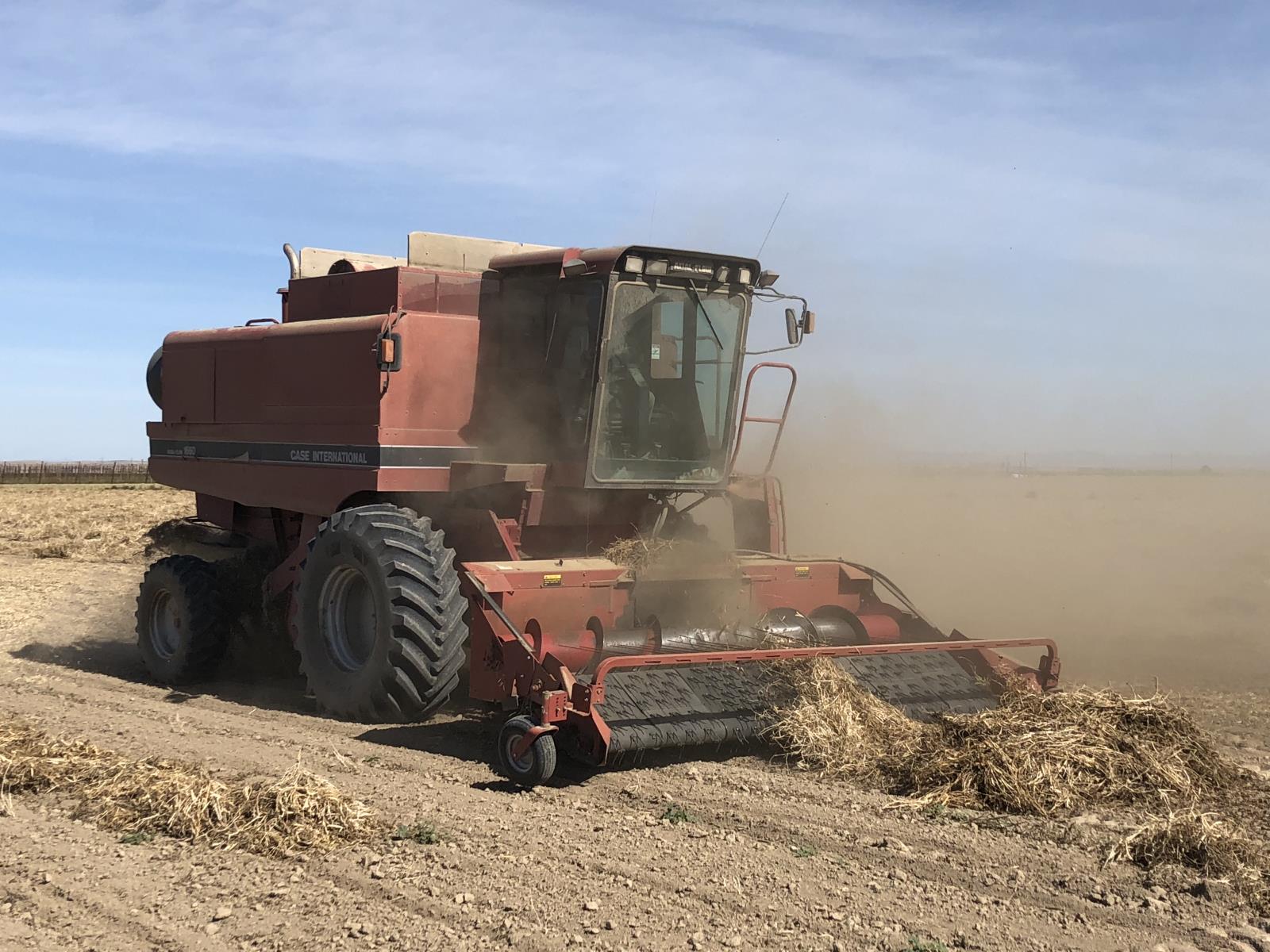Idaho dry bean acres up 38 percent

By Sean Ellis
Idaho Farm Bureau Federation
POCATELLO – Idaho farmers planted significantly more dry bean acres this year, as rising farm-level prices for that crop make it an attractive option for a lot of producers.
“Prices are good and most other commodities are down right now so beans look pretty attractive to a lot of farmers,” said Mike Goodson, who grows dry beans in the Parma area.
The United States is the global leader in edible dry bean production and American farmers plant about 1.5 million acres a year, according to the U.S. Dry Bean Council.
Idaho ranks No. 5 in the nation in dry bean production but is the country’s No. 1 bean seed producing state and about 70 percent of the dry beans grown here are grown for seed.
According to USDA’s National Agricultural Statistics Service, Idaho farmers planted 65,000 acres of dry beans this year.
That’s up 38 percent from the 47,000 acres of beans that were planted last year in the Gem State.
NASS estimates U.S. dry bean acres this year at 1.58 million, up 23 percent over 2019.
A challenging bean production season last year in Canada and some of the United States’ main bean-producing states resulted in a significant decrease in dry bean supply, according to industry leaders.
As a result, farm-level dry bean prices rose significantly and are up 25-40 percent, depending on variety, over the same period last year.
According to NASS, the average marketing price for Idaho dry beans hovered in the mid- to low-$30 per hundredweight (cwt) range from 2011-2015, then decreased to $27 in 2016 and 2017 before dropping to $23.40 in 2018 and $22.40 in 2019.
According to USDA’s Weekly Dry Bean market News, pintos, which drive bean prices, were selling in the $38-40 range for the week ending June 30. That’s up from $22-23 during the same period last year.
Given the current supply and demand scenario, it’s no big shocker that dry bean acres are up significantly in Idaho and the United States, said Idaho Bean Commission Administrator Andi Woolf-Weibye.
“There were some real shortages of beans world-wide last year and the shutdowns drove demand up significantly,” she said. “It doesn’t surprise me at all that acres are up that much.”
“We have a pretty strong bean market right now and pretty good forward contracts. The (bean acre) numbers don’t surprise me at all,” said Don Tolmie, production manager of Treasure Valley Seed Co., which operates a bean processing facility in Homedale.
Most of Idaho’s dry bean acres are located in the Magic Valley of southcentral Idaho and the Treasure Valley of southwestern Idaho.
The prices that farmers receive for selling dry beans was already high before the COVID-19 outbreak hit and the increased demand as a result of the pandemic has kept prices up, said Kimberly bean farmer Monty Hamilton.
“It’s almost a perfect storm,” he said. “There was a short crop last year in (many places) and then COVID hit and everybody is buying as many dry beans as they can. As a result, prices went up and guys planted as many acres as they could everywhere.”
“Everything is down (in price) right now and dry beans is up,” Hamilton added. “That’s one of the few crops guys can make any money on this year.”
Still can't find what you are looking for? Find by topic:
- Achievement Award (YF&R)
- Actions Alerts
- Advocacy
- Ag Ambassadors
- American Farm Bureau
- American Farm Bureau Policy Book
- Archive Photos
- Articles
- Board of Directors
- Calendar - State/District
- Calendar - County
- Capitol Reflections
- Collegiate Chapters
- Committee Application Form
- Commodities
- Convention Annual
- County Presidents & Board Information
- County Resource Page
- Delegate Form
- Discount Programs
- Discussion Meet
- Discussion Meet - High School
- Education Programs
- Events
- Excellence Award (YF&R)
- Expense Voucher
- Flickr
- Gem State Producer
- High School Discussion Meet
- High School Speech Contest
- Hope in Idaho Ag
- House of Delegates Credentials Form
- IFBF Board of Directors
- IFBF Policy Book
- IFBF Staff
- Insurance
- Legislative Action Program
- Legislative Issues
- Library
- MAC Trailer
- Magazines
- Map My Benefits
- Member Benefits
- Member Discount
- Membership Application
- Mission Statement
- Moving Agriculture to the Classroom
- Newsletter Sign up
- News Releases
- News Room
- Open Range Law
